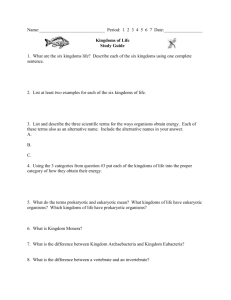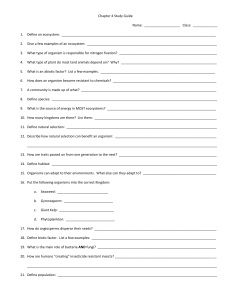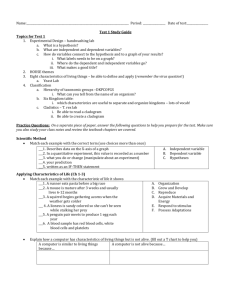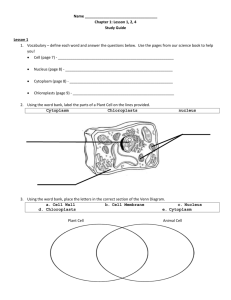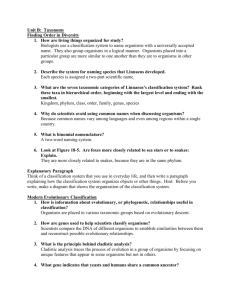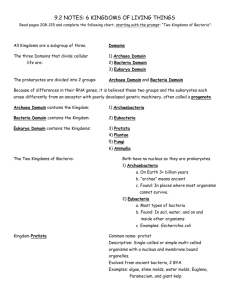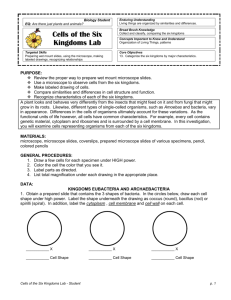Changing classification systems - ScienceWeb
advertisement
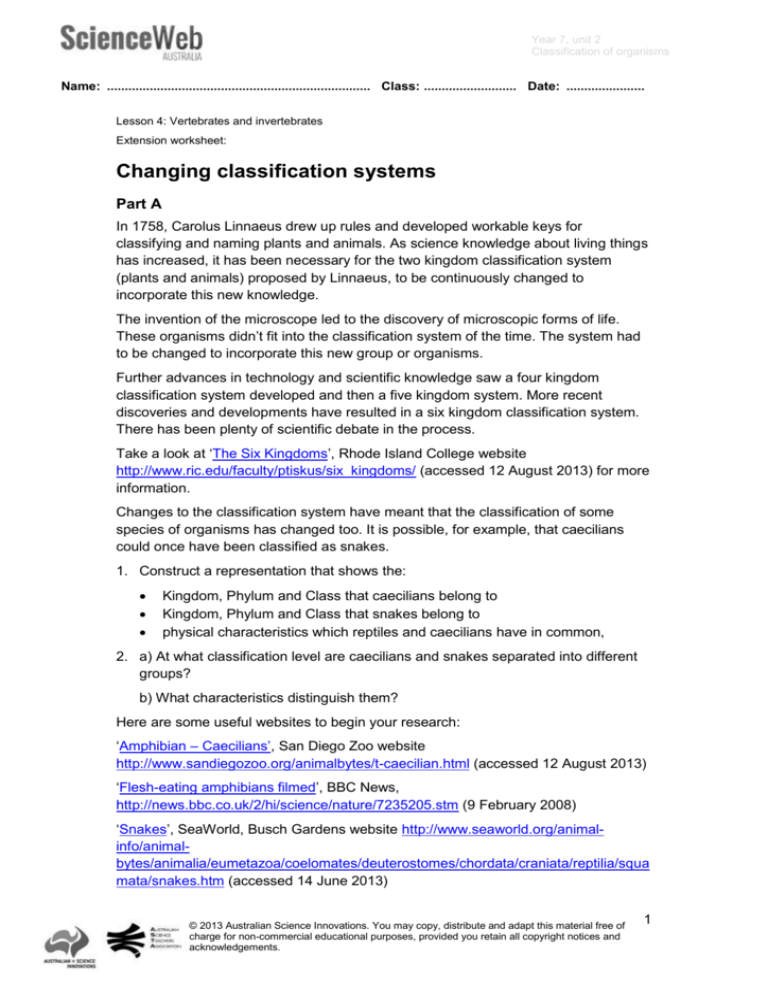
Year 7, unit 2 Classification of organisms Name: .......................................................................... Class: .......................... Date: ...................... Lesson 4: Vertebrates and invertebrates Extension worksheet: Changing classification systems Part A In 1758, Carolus Linnaeus drew up rules and developed workable keys for classifying and naming plants and animals. As science knowledge about living things has increased, it has been necessary for the two kingdom classification system (plants and animals) proposed by Linnaeus, to be continuously changed to incorporate this new knowledge. The invention of the microscope led to the discovery of microscopic forms of life. These organisms didn’t fit into the classification system of the time. The system had to be changed to incorporate this new group or organisms. Further advances in technology and scientific knowledge saw a four kingdom classification system developed and then a five kingdom system. More recent discoveries and developments have resulted in a six kingdom classification system. There has been plenty of scientific debate in the process. Take a look at ‘The Six Kingdoms’, Rhode Island College website http://www.ric.edu/faculty/ptiskus/six_kingdoms/ (accessed 12 August 2013) for more information. Changes to the classification system have meant that the classification of some species of organisms has changed too. It is possible, for example, that caecilians could once have been classified as snakes. 1. Construct a representation that shows the: Kingdom, Phylum and Class that caecilians belong to Kingdom, Phylum and Class that snakes belong to physical characteristics which reptiles and caecilians have in common, 2. a) At what classification level are caecilians and snakes separated into different groups? b) What characteristics distinguish them? Here are some useful websites to begin your research: ‘Amphibian – Caecilians’, San Diego Zoo website http://www.sandiegozoo.org/animalbytes/t-caecilian.html (accessed 12 August 2013) ‘Flesh-eating amphibians filmed’, BBC News, http://news.bbc.co.uk/2/hi/science/nature/7235205.stm (9 February 2008) ‘Snakes’, SeaWorld, Busch Gardens website http://www.seaworld.org/animalinfo/animalbytes/animalia/eumetazoa/coelomates/deuterostomes/chordata/craniata/reptilia/squa mata/snakes.htm (accessed 14 June 2013) © 2013 Australian Science Innovations. You may copy, distribute and adapt this material free of charge for non-commercial educational purposes, provided you retain all copyright notices and acknowledgements. 1 Year 7, unit 2 Classification of organisms Name: .......................................................................... Class: .......................... Date: ...................... Part B Create a presentation to show changes in the classification of organisms that occurred as scientists moved from a two kingdom classification system through four kingdoms then five kingdoms and recently to six kingdoms. The following website may be useful. ‘Five Kingdom Classification System’, Rice University website, http://www.ruf.rice.edu/~bioslabs/studies/invertebrates/kingdoms.html (accessed 12 August 2013) © 2013 Australian Science Innovations. You may copy, distribute and adapt this material free of charge for non-commercial educational purposes, provided you retain all copyright notices and acknowledgements. 2




